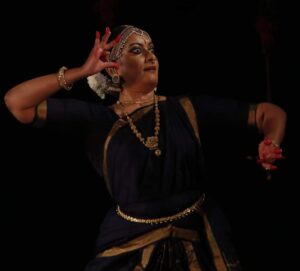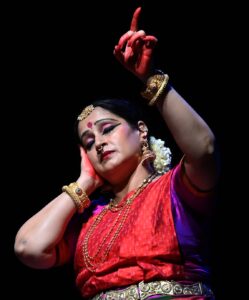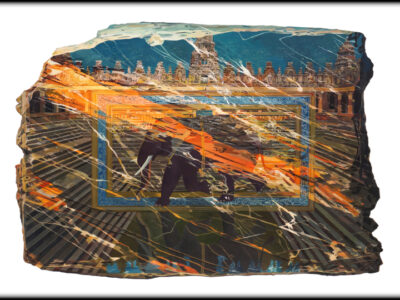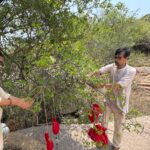Guru and founder of Lasyakalpa, Katyayani Ganti pens highlights from her discussion with Senior Kuchipudi dance Guru Anupama Kylash as a part of ‘Back to Basics’ – a series of digital events
Those that define Telugu beauty and its lilt and nuance are being dropped for a more generic flavour that is being adopted by almost all south Indian dance traditions in recent times, says Dr Anupama Kylash during Lasyakalpa’s ‘Back to Basics’ series
Last year, after the pandemic threw the world in a state of chaos, it also brought forth the resilience of artistes, who thrive under any kind of hardship. Innumerable digital programs, performances, talks, debates began happening on various platforms. And it struck me that what I had wanted to achieve through seminars, conferences or lectures on certain aspects of Kuchipudi dance could now be done more easily, and would reach a larger audience. This thought resulted in ‘Back to Basics’, which after a one-year gestation period, became the first digital program on behalf of Lasyakalpa Foundation. ‘Back to Basics’ focuses on various aspects of Kuchipudi dance as an art form that has undergone innumerable changes in the last one century.

Katyayani Ganti
As most of our traditional performative art forms are married to the written word, literature and poetry, more importantly, those in Telugu was the focal point of the first conversation. I stole the title from my father and named it Dance Through Words (his title for an article on Emily Dickenson’s work was Dance Of Words), as it is the word that gives artistes the entry into that story, that emotion and that form.
It didn’t come to me as a surprise that when I thought of this subject, my mind threw the name “Anupama” right back at me, for when I speak with her, it is her knowledge of the vast pantheon of writings, in Telugu or otherwise, that constantly amazes me. She is one of those few artistes who has developed sensibilities that are extremely rooted in art, culture, language, history – both political and religious – and of course, dance. In her work one can see the mind enmeshing all of these together to form every idea.
And so, I sat down on 11th of July on Instalive, to talk with Dr. Anupama Kylash about what the basic elements of Telugu literature and poetry are that a Kuchipudi dancer needs to be aware of. Was I blown once again!
Historic Lineage of Telugu Language
It was when the Kings began to sway towards more classical Telugu when the Sanskrit proportion in Telugu became more than that of the others – Dr Anupama Kylash
Anupama started by discussing the historic lineage of the Telugu language in both Sanskrit and Prakrit. Culling references from various inscriptions, textual references beginning from the first century AD, she gave a gist of those that include Telugu words in them. One very interesting reference was that of the Addanki inscription in which there is a Telugu verse in Taravozu, which is believed to be the nascent form of the Dwipada, while the word Andhra Bhasha itself, she said, was mentioned in the Nadampudi inscription in 1053 AD. Discussing the complex process that is the evolution of any language, she spoke about the various other linguistic influences on Telugu – including Sanskrit, Prakrit, Paishachi, Bheend, Qui and others. It was when the Kings began to sway towards more classical Telugu when the Sanskrit proportion in Telugu became more than that of the others. This, consequently, led to the famous, landmark translation of the epic Mahabharata by our Kavitrayam – Nannayya, Tikkanna and Erranna – in Telugu, which in turn led the way to the Kavya and Itihasa literature in Telugu, which then again led us to the Prabandhas.
But, the more interesting hue she described were the parallel happenings in the language. Though not a fan of the demarcation we draw in today’s world between the margi and the desi, thus attributing hierarchy to the terms and what they stand for, she discussed the desi stream that was simultaneously flowing on its own alongside the margi. Literature on Veerashaiva, such as the Basavapuranam, stands as an example of this.

Dr Anupama Kylash
Understanding Literature
A beautiful way to attempt understanding literature was put forth by Anupama– she said that they need to be viewed from the perspective of the royal dynasties, that of major poets and that of genres. These three draw their own image of the work, but give us a full picture when viewed side by side.
Moving onto the literature specifically written for the performing arts, she states quite firmly that this kind of work mainly comes under the category of the Desi branch. While the content in female performing traditions were directed by the context in which they were performing – a ritual or a court or an intimate chamber concert; those like Kuchipudi, which is a male, theatrical Bhagavata form drew from the people. As most of these forms are Vaishnava based traditions, the two major works that emerged in it, the Bhamakalapam and the Gollakalapam are also rooted in its philosophies. Now, this is where Anupama surprises me. The same ‘Bhamakalapam’ and ‘Gollakalapam’ we have been watching and hearing for decades, she said, are two sides of the same coin. While the story with Bhama is based on the concept of the individual towards the universal, that with the Gollabhama takes it from the universal to the individual. Hence, this tells us that the kalapam, essentially a Sreegaditham, one of the kinds of uparupakas the texts describe, is vastly different from yakshaganams, which are all about the plot, the characters and the theatricality.
The Roots of Yakshagana
Yakshagana can be traced back to Jakkula tribes, who would descend from their mountains during the time of Shivaratri, similar to the Kuravi tribes (from where the word Kuravanji is formed), and narrate various stories. These eventually became yakshaganas, after tribal roots merged with Itihasa and Purana. She described with numerous examples how social structures, places, geographies, common things and day to day life become part of the story with characters from the mythology and puranas, to form such genres, and hence, they are known as people’s literature.
It is mind boggling to hear the various metres and metrics that are employed in writing these works. While more known are those such as Seesapadyams, Kandapadyams, other less known ones are Ela, Ardhachandrika, Reka, and Ragadas. But as over the years, more margi patterns were adopted rather than desi ones in Kuchipudi, they call their yakshaganas Yakshagana Natakamu.
Missing Flavour in traditional dance
Anupama hit the nail on the head when she said that the issue with today’s Kuchipudi dance is that absolutely none of these theatrical literary pieces are featured in today’s recitals. Those that define Telugu beauty and its lilt and nuance are being dropped for a more generic flavour that is being adopted by almost all south Indian dance traditions in recent times.
Anupama raised many questions that would make any true Kuchipudi artiste question their moves and choices in the future. Why not include a dwipada in the course of a performance? Why drop the beautifully written Panchachamaram that is there before the Bhama daruvu in the kalapam? What is making us choose stotra based literature which is not even meant for dance, while there is a gold mine of that which has been written purely for performance? Why aren’t we creating content and material that is suitable for the solo tradition, which is a female centric idea, but is still true to the theatrical roots of Kuchipudi?
All extremely pertinent questions! Look, she said. Search in the libraries for you never know what gold you will find there. Instead of simply approaching a lyric writer to accomplish the job, why not cull material from various sources, which would be even more fantastic as it would bring numerous tones and voices to the new production? The love and excitement she has for a beautifully written line, she says, she wants to see in the next generation. The passion for feeling the nuance of the word or a sentence, and for them to be thrilled when they discover something well-written.
I will refrain from transcribing more of the talk here for the simple reason that I want the readers to go and watch it. For then, you will see what a true lover of literature feels for these works; you will experience how amazing it is for a dancer to be so swept away by poets, kavis, writers from across centuries; you will, if you are an art lover even by a silver, be inspired to buy a Telugu work so you can immerse yourself in the richness and vastness.
Some of the featured episodes include
— Prof. Anuradha Jonnalagadda, who discussed the history and evolution of Kuchipudi, along with the various debates, discussions and controversies that surrounded the form the last century.
https://www.instagram.com/tv/CRwRnp6qQyQ/?utm_medium=copy_link
— Guru Jaikishore Mosalikanti, who will elucid ate the Vempati oeuvre of work, his choreographies, his patterns and aesthetics that he had developed over a life time, which had come to re-define what Kuchipudi had been until then.
UPCOMING EPISODES WILL FEATURE

Guru DSV Sastry, who will delineate the musicality that is unique to Kuchipudi, what brings forth those rasas in ragas, and how to ensure it is kept a continuous tradition henceforth.
— Dancer Sahiti Reddy, who will explain the mechanics of the human body with respect to the Kuchipudi technique to help dancers dance better and dance longer.
These conversations on Kuchipudi dance will happen on Lasyakalpa’s Instagram handle, on every alternate Sunday, 7.30 PM IST. The past episodes can also be accessed here.
















